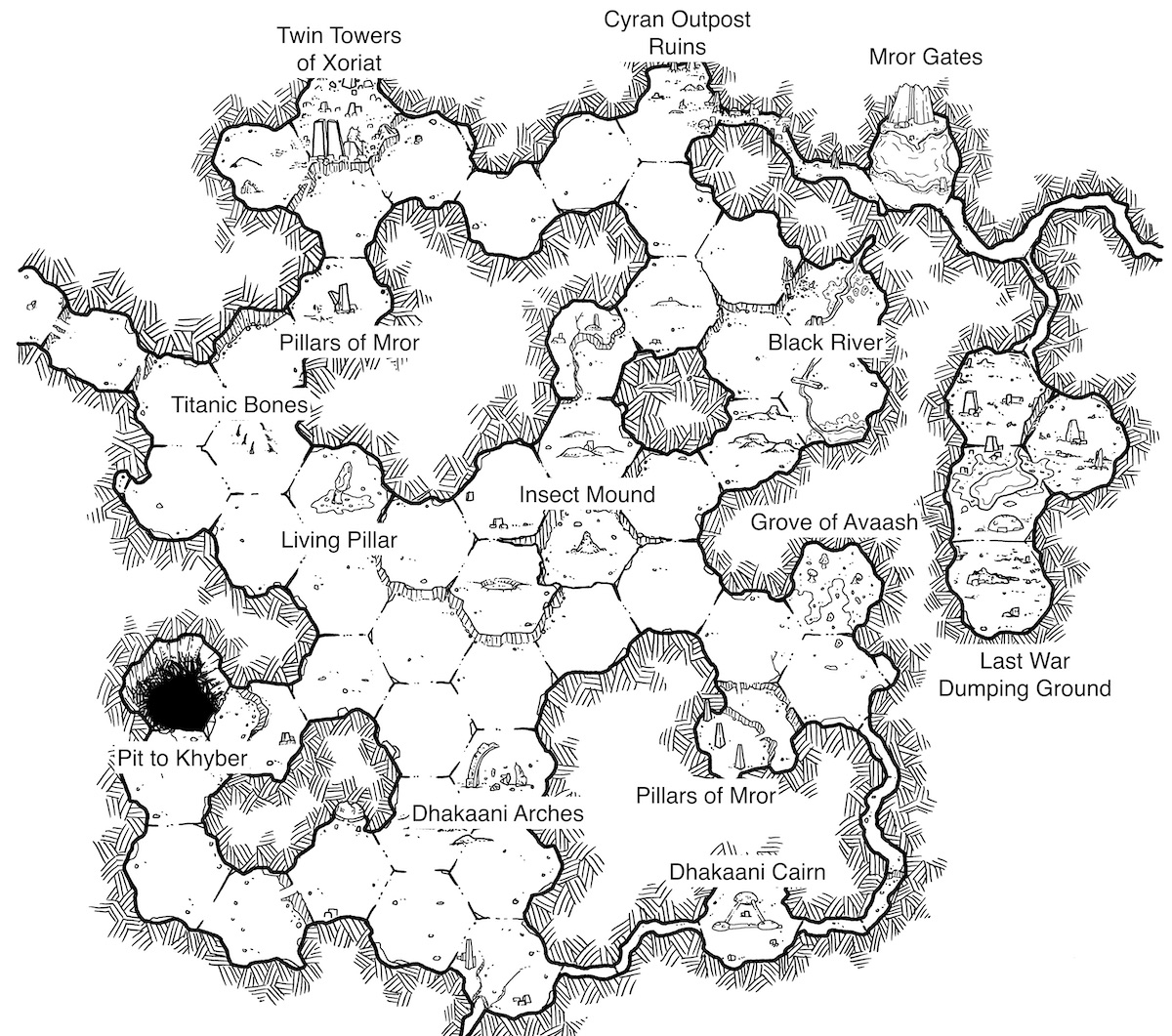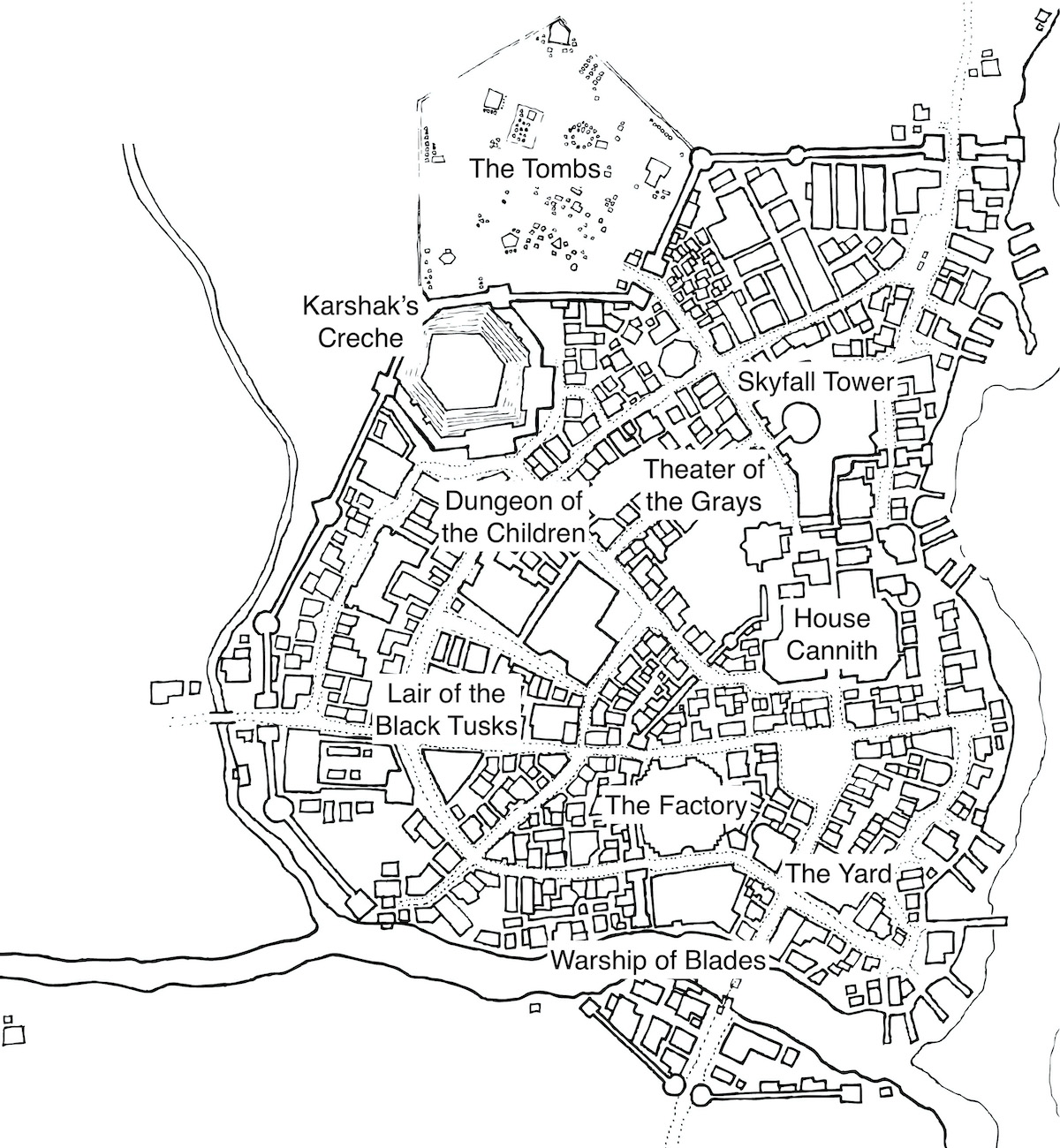New to Sly Flourish? Start Here or subscribe to the newsletter.
Building Lazy Dungeons
by Mike on 9 November 2020
The eight steps from Return of the Lazy Dungeon Master mentions little about maps. The expectation is that the "develop fantastic locations" step covers locations big and small and stick-figure diagrams are enough to connect locations together.
Recently, though, I've been using actual location maps — mostly dungeon maps — in my prep and found a nice lazy way to fill these maps out.
Behold Dyson Logos
There are lots of sources for great maps out there but my current favorite is Dysonlogos. Dyson offers nearly a thousand maps on his site for free, many of them usable in commercial works if you're so inclined. Visit the site, grab a map that fits the location you're thinking of, and you're off to the races. For lazy map making, think in general terms about the location you need and grab the first map that fits the idea. Need a crypt? Grab the first crypt you find. The less picky you are, the easier it is to find a map that works.
Annotate Locations
Next, as part of "developing fantastic locations", annotate the map with evocative names that fuel our minds when the characters reach the room. This way we don't waste time on rooms the characters don't visit and yet still have enough detail to improvise the room if the characters do go there.
Annotate the map with whatever image editor is easies to use. On my Mac, I use Preview to add text labels with white backgrounds to the map so it's easy to read against the map's background. Here's an example map from my Eberron game.

Microsoft Paint works equally well. More advanced image editors can also do the trick but you don't need anything too fancy. It should be fast and easy. We're not making publication-level work here. Friends of mine like dropping the map into Roll 20 and annotating it right in the virtual tabletop. Anything can work as long as it's fast and easy.
Define Ten Locations
Sometimes we'll want to annotate every room in a dungeon if it isn't too much trouble. Other times, though, it isn't so clear how many places we need to label. A city for example, may need a bunch of locations to feel real and alive. In this case, I recommend defining ten locations. Ten seems like a lot, and it may be more than you actually need, but defining ten locations pushes our brains into interesting and creative directions. Here's an example of a city map for the city of Eston in which I defined ten locations the characters could explore:

Dropping evocative names on a map like this gives us ideas should the characters visit a location. For larger locations we might use additional maps to further break down these larger places. Otherwise, if the characters never bother to explore them, we need nothing more than a couple of words.
Use Evocative Labels
When you're considering your labels, make them unique and interesting. Inspire yourself with your descriptions — even of they're only two words long. "Lighting Rail Station" isn't very interesting but "Wild Lighting Rail Station" sounds cooler. We have an idea what might be going on there. "Radiant Sinkhole" is more interesting than a straight sinkhole. Here's a list of ten example evocative labels for the inner cars of Karshak, the rogue warforged lighting rail in my Eberron game modeled after Blane the Mono in Stephen King's Wastelands:
- Manifest Portal Engine
- Karshak's Artificer Brain
- Warforged Guardian Car
- Automated Dining Car
- Transparent 1st Class Cabin
- Gas-induced Sleeping Cabin
- Cryofreeze Cabin
- Dragonshard Storage Car
- Automaton Construction Car
- War Caboose
These aren't perfect examples but hopefully it gives you the idea. The main thing is that the labels mean something to you. You're not writing these for anyone else.
Need some inspiration? Try out the random monument generator or this Eberron location generator to get some ideas for interesting location labels.
Home Use Versus Publication
When we're preparing stuff like this for our home game, remember that we're only doing this for ourselves. We don't need to meet the high standards required for publishing adventures. We only need a few words to spark our own imagination, not pass this along to others. Fast and dirty is perfectly acceptable for our own prep. Leave it rough, no one will care what it looks like. The game is your painting, your maps and prep notes are your messy palette and brush rag. Don't worry if they're rough.
Related Articles
Share this article using this link: https://slyflourish.com/building_lazy_dungeons.html
Subscribe to Sly Flourish
Subscribe to the weekly Sly Flourish newsletter and receive a free adventure generator PDF!
More from Sly Flourish
Sly Flourish's Books
- City of Arches
- Return of the Lazy Dungeon Master
- Lazy DM's Companion
- Lazy DM's Workbook
- Forge of Foes
- Fantastic Lairs
- Ruins of the Grendleroot
- Fantastic Adventures
- Fantastic Locations
Have a question or want to contact me? Check out Sly Flourish's Frequently Asked Questions.
This work is released under a Creative Commons Attribution-NonCommercial 4.0 International license. It allows reusers to distribute, remix, adapt, and build upon the material in any medium or format, for noncommercial purposes only by including the following statement in the new work:
This work includes material taken from SlyFlourish.com by Michael E. Shea available under a Creative Commons Attribution-NonCommercial 4.0 International license.
This site may use affiliate links to Amazon and DriveThruRPG. Thanks for your support!









